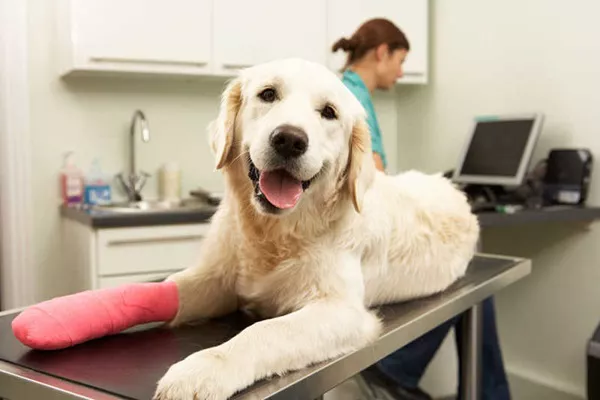Pet insurance can provide peace of mind and financial protection in the event of your pet’s illness or injury. Understanding how to claim on your pet insurance effectively ensures you get the most out of your policy. This comprehensive guide will walk you through the necessary steps, from understanding your policy to filing a claim and receiving payment.
Understanding Your Policy
The first step in making a pet insurance claim is to thoroughly understand your policy. Review your policy documents to familiarize yourself with the coverage levels, exclusions, and the claims process. Key points to focus on include:
Coverage Levels: Identify what types of treatments and incidents are covered under your policy. Common coverages include accident and illness, routine care, and preventive treatments.
Exclusions: Understand what is not covered by your policy. This might include pre-existing conditions, certain types of treatments, or specific breeds.
Deductibles and Co-pays: Know your policy’s deductible (the amount you pay out-of-pocket before insurance kicks in) and any co-pays (the percentage of costs you are responsible for after the deductible is met).
Claim Limits: Be aware of any annual, per-incident, or lifetime limits on your policy. These limits cap the amount your insurer will pay.
Claims Process: Familiarize yourself with the insurer’s specific process for filing a claim, including any forms required and deadlines for submission.
Initial Steps
When your pet requires veterinary care, the initial steps you take can streamline the claims process:
Contact Your Vet: Ensure your vet is aware that you will be filing a claim and ask for detailed records and invoices for the treatment provided.
Notify Your Insurer: Contact your insurance provider’s claims department as soon as possible. Some insurers require pre-authorization for certain treatments.
Gather Information: Collect all necessary information about the incident or illness, including dates, symptoms, and a detailed account of the vet’s diagnosis and recommended treatment.
see also: What Does Renters Insurance Policy Cover
Documentation Required
To file a claim, you will need to provide specific documentation. Ensure you have the following:
Veterinary Reports: Detailed medical records from your vet, including diagnosis, treatment plan, and any follow-up care required.
Receipts and Invoices: Original receipts and itemized invoices for all treatments and medications.
Claim Form: A completed claim form from your insurance provider, which can usually be downloaded from their website.
Policy Number: Your pet insurance policy number, which is necessary to process the claim.
Additional Documentation: Any other relevant paperwork requested by your insurer, such as proof of payment or a referral letter if you visited a specialist.
Filing the Claim
Follow these steps to file your pet insurance claim:
Complete the Claim Form: Fill out the claim form accurately. Ensure all sections are completed, including personal information, policy details, and specifics about the incident or treatment.
Attach Documentation: Attach all required documents, including veterinary reports and receipts. Make sure all documents are clear and legible.
Submit the Claim: Submit the claim form and documentation to your insurance provider. This can typically be done online through the insurer’s portal, via email, or by mail. Online submissions often expedite the process.
Confirmation: After submission, you should receive a confirmation from your insurer that they have received your claim. Keep this confirmation for your records.
Time Frame for Filing
It is crucial to file your claim within the specified time frame outlined in your policy. Most insurers require claims to be filed within 30 days of the incident or treatment. Filing within this period ensures your claim is considered valid and prevents delays in processing.
Claim Processing Time
Once your claim is submitted, the processing time can vary, but most insurers aim to process claims within 14 working days. During this period, the insurer reviews the claim details, verifies the documentation, and makes a decision. Some factors that can affect processing time include the completeness of your documentation and the complexity of the claim.
Payment Details
If your claim is approved, the payment process typically involves the following steps:
Payment Method: Payments are usually made by cheque or direct deposit, depending on your insurer’s policies and your preferences.
Notification: You will be notified once the payment has been processed. This notification often includes a breakdown of the claim settlement.
Time Frame for Payment: Once approved, payments are generally made within a few days to a week. However, this can vary based on the insurer and payment method.
Keeping Records
After your claim has been paid, it is essential to keep all original documents for a certain period. Typically, insurers recommend retaining these records for at least three months. This includes all correspondence, claim forms, receipts, and any additional documentation related to the claim. Keeping thorough records can help if there are any questions or issues regarding the claim in the future.
see also: What Is The Best Type Of Cat Insurance
Contact Information
For further assistance and questions regarding the claims process, it’s important to have your insurer’s contact information readily available. This includes:
Claims Department Phone Number: Use this for immediate assistance or questions about your claim.
Email Address: For submitting documents or receiving written confirmation of your claim status.
Online Portal: Most insurers have an online portal where you can submit claims, track the status, and access policy information.
Customer Service: For general inquiries about your policy or coverage.
Conclusion
Filing a pet insurance claim can seem daunting, but understanding your policy and following the right steps can make the process smoother. Start by thoroughly reviewing your policy, promptly gather and submit the necessary documentation, and maintain clear communication with your insurer. By adhering to these guidelines, you can ensure that your claim is processed efficiently, providing the financial support you need to care for your beloved pet. Keeping organized records and understanding the terms of your policy will also help you navigate any future claims more confidently.
FAQs about Pet Insurance
1. Is It Worth Claiming on Pet Insurance?
Yes, claiming on pet insurance is often worth it, especially for significant medical expenses. Here’s why:
Financial Protection: Pet insurance can cover costly veterinary treatments, surgeries, and medications, reducing the financial burden.
Peace of Mind: Knowing that you can afford the best possible care for your pet without worrying about high costs provides peace of mind.
Comprehensive Coverage: Many policies cover a wide range of treatments, including accidents, illnesses, hereditary conditions, and preventive care.
Preventative Care: Some plans include coverage for routine check-ups, vaccinations, and dental care, helping you keep your pet healthy.
However, it’s essential to read your policy details carefully to understand what is covered and what is excluded, and to consider if the premium cost is justified by the potential benefits.
2. How Much Does Dog Insurance Pay Out?
The payout amount for dog insurance depends on several factors, including the policy type, coverage limits, deductibles, and co-pays. Typically:
Coverage Percentage: Most pet insurance policies reimburse a percentage of the vet bill, commonly ranging from 70% to 90%.
Annual or Per-Incident Limits: Policies may have a maximum payout limit per year or per incident. Common annual limits range from $5,000 to $15,000, while some policies offer unlimited payouts.
Deductibles: The deductible is the amount you pay out-of-pocket before the insurance coverage kicks in. Deductibles can be per year or per incident and usually range from $100 to $500.
For example, if your policy covers 80% of vet bills with a $250 deductible, and you incur $1,000 in vet bills, you would pay $250 plus 20% of the remaining $750, totaling $400. The insurance would cover the remaining $600.
3. Can You Get Money from Pet Insurance?
Yes, you can receive money from pet insurance by filing a claim for covered veterinary expenses. The process typically involves the following steps:
Visit the Vet: Pay the vet bill upfront at the time of service.
Submit a Claim: Complete a claim form provided by your insurance company and submit it along with the itemized vet bill and any required medical records.
Claim Review: The insurance company reviews your claim, which may take a few days to a few weeks, depending on the company and the complexity of the claim.
Reimbursement: Once approved, you receive reimbursement based on your policy’s coverage percentage, minus any deductibles and co-pays.
Reimbursements can be made via check or direct deposit, depending on your insurance provider.
4. What Does Maximum Payout Mean for Pet Insurance?
Maximum payout refers to the highest amount an insurance company will pay for covered veterinary expenses. This can be structured in various ways:
Annual Maximum: The maximum amount the insurance will pay out in a policy year. Once this limit is reached, you are responsible for any additional costs until the policy renews.
Per-Incident Maximum: The maximum amount the insurance will pay for a single illness or injury. If treatment costs exceed this amount, you will have to cover the remaining expenses.
Lifetime Maximum: The total amount the insurance will pay over the lifetime of your pet. Once this limit is reached, coverage ends.
You Might Be Interested In




















